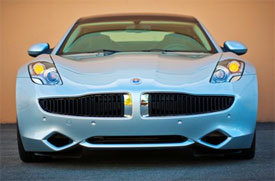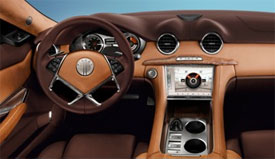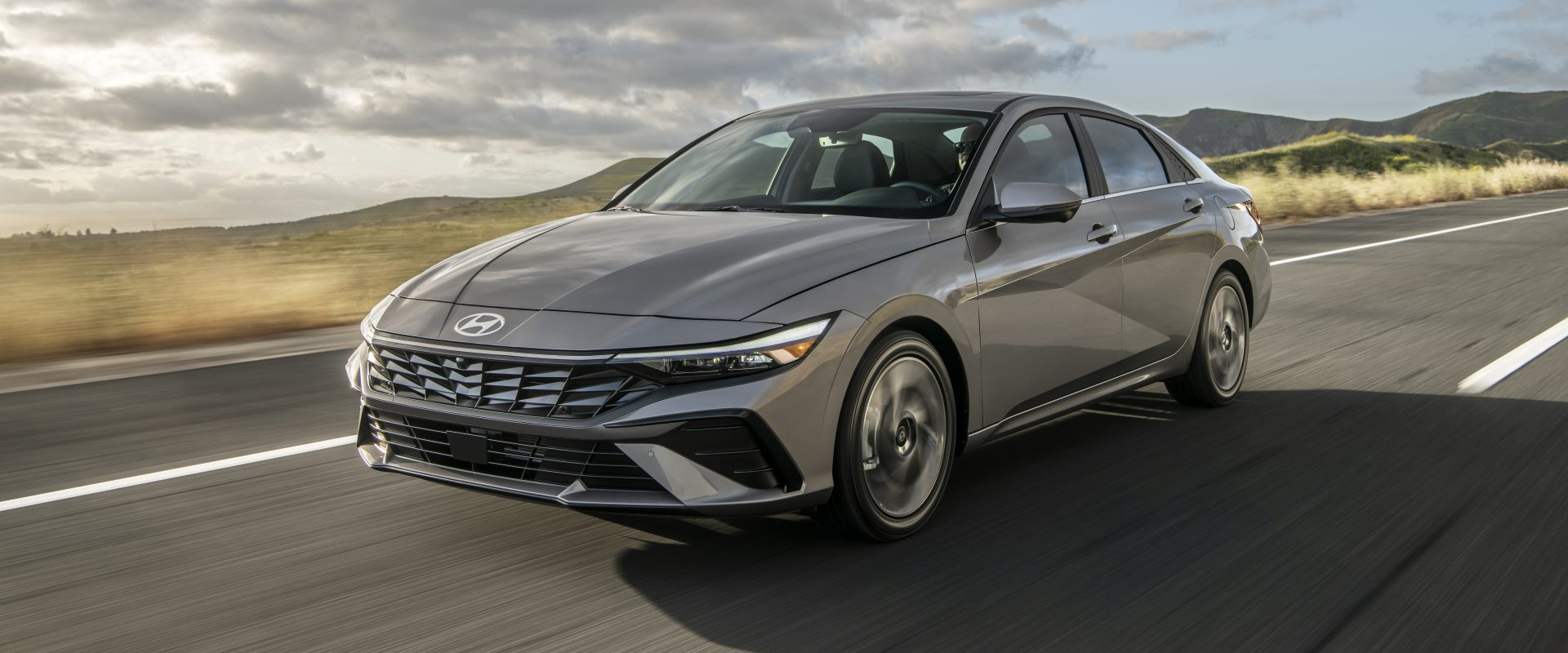2012 Fisker Karma
As we make our way to an electric-powered driving future, there are many different methods for getting us there - from hybrids, to plug-ins, to even a few full-electrics. And, while most of us are familiar with the concept of karma, most people are not familiar with the Fisker Karma. The Fisker Karma is the world’s first EV luxury sports sedan with extended range. And, as they say, what goes around comes around; so let’s find out what comes from our first go-round.
So what exactly does it mean to be the world’s first EV luxury sport sedan with extended range? Well, for the 2012 Fisker Karma it means driving up to 50 miles on electric power alone, before shifting to gas power, which comes from a turbocharged inline-4, increasing your range to up to 300-miles; but as always, your results may vary. More on that later.
The drive system is similar to Chevrolet’s Volt, but one-ups it by sending power to the rear wheels, and allowing drivers to manually select all-electric or hybrid-electric drive. And the Karma “ups” just about every other car when in comes to style, as the look is far more “sport-luxury” than “eco” with smooth lines wrapping around standard 22-inch wheels and an aluminum space frame.
 Sheet “metal” is actually a mix of aluminum and composite body panels, and the sleek roof is comprised of a solar panel that not only looks cool, but sends power directly to the batteries to aid in charging. Those batteries are located in the central “spine” of the car, and are mounted as low as possible.
Sheet “metal” is actually a mix of aluminum and composite body panels, and the sleek roof is comprised of a solar panel that not only looks cool, but sends power directly to the batteries to aid in charging. Those batteries are located in the central “spine” of the car, and are mounted as low as possible.
Exhaust tips sit just behind the front wheels, expelling spent gas from the GM Ecotec 2.0-liter turbocharged I4 engine. It sends its 260-horsepower through a Rear Differential Module and two rear-mounted electric traction motors, so there’s no direct engine connection to the wheels. There’s also no traditional transmission, but drivers can choose whether to run in EV “Stealth” mode or full-power “Sport” mode with steering wheel mounted paddles.
All combined, the system puts out 403-horsepower and almost 1,000 pound feet of torque, and that’s where the “sport” part of the equation comes in. There’s instant throttle response when the battery is full, and the Karma zips to 60 in 6.3-seconds. But even when the battery is drained and you’re running on just engine, it’s still very impressive; top speed is 125 miles-per-hour. Batteries are lithium-ion and have been a problem, causing a Karma to stop dead while being tested by Consumer Reports. All 2500 Karmas on the road will get new battery packs under warranty. That battery pack pushes curb weight to a hefty 5,300 pounds, and that calls for serious brakes. Fortunately, the standard Brembo’s are up to the task and include regenerative braking.
 The power-train might be all about the environment, but the interior environment is all about high-tech, yet it remains clean and simple. Unique items include the funky push button drive selector and a 10-inch Fisker Command Center touch-screen that manages just about every interior function. Gauges are designed with both an eye towards high-end time pieces and classic sports car dials. Real wood trim is used throughout - all certified reclaimed as sunken, fallen, or rescued. Rear seat passengers get big bucket seats with a substantial center console between them. And there’s a real, but small trunk with 6.9 cubic-feet of space.
The power-train might be all about the environment, but the interior environment is all about high-tech, yet it remains clean and simple. Unique items include the funky push button drive selector and a 10-inch Fisker Command Center touch-screen that manages just about every interior function. Gauges are designed with both an eye towards high-end time pieces and classic sports car dials. Real wood trim is used throughout - all certified reclaimed as sunken, fallen, or rescued. Rear seat passengers get big bucket seats with a substantial center console between them. And there’s a real, but small trunk with 6.9 cubic-feet of space.
The driving experience of the Karma is unique, but not foreign. There is a distinct hum from the power-train when in Stealth mode. The gas-engine kicks in fairly smoothly, but still noticeably. The suspension is a Short-Long Arm design with load-leveling monotube coil-overs and stabilizer bars, giving a surprisingly supple ride, even with the giant wheels. A 3.3 kWh battery charger is onboard and can charge the Karma on household 120 or 240-volt circuit, taking as little as 6-hours.
As for the Government Fuel Economy Ratings, they didn’t come out quite as good as Fisker had wished. The MPG equivalent is 52 miles-per-gallon combined in electric mode and 20 miles-per-gallon from the gasoline engine. The EPA also estimates only 32-miles of electric only range. The Chevrolet Volt is rated higher.
As for more shocking numbers, Karma pricing begins at a lofty $96,850 for the EcoStandard, the mid-level EcoSport comes in at $104,580, while the top level EcoChic tips the scales at $109,850. But then, early adopters always pay a price penalty.
The 2012 Fisker Karma is certainly one beautiful ride, and we’d probably buy it based on looks alone; but we think it is also a very significant vehicle. It has taken a premium-step up in the auto industry’s slow climb towards an electrified future, and done it without looking or acting like an “eco-mobile.” So, come for the styling, stay for the progress, and enjoy the ride.
Specifications
- Engine: 2.0-liter turbocharged I4
- Horsepower: 260
- 0-60 mph: 6.3 seconds
- EPA: 32 mpg electric/ 20 mpg gasoline
2024 Hyundai Elantra
Basic Transportation At Its Best…And That Is A Compliment
For those of you who write in every week bemoaning the fact that all we seem to do around here is test incredibly expensive cars and EVs that only the very well to do can afford, this one’s for you. It’s a commuter and budget friendly mainstay from Hyundai, the compact Elantra sedan. And, it has been nicely updated for 2024.
We clearly do enjoy driving high-performance machines and ultra-luxury rides around here, but like most of you, when it comes time to drive home at the end of a long workday, we do so in something much more practical and affordable, like this 2024 Hyundai Elantra sedan.
If you’re thinking the front end has gotten more aggressive, you’re right. Hyundai calls it a “Shark Nose” theme, and we’re guessing they were thinking more Great White than Hammerhead, though Megamouth shark would also apply. It helps for a low and wide look; more substantial than the typical compact. Other additions for ’24 include slimmer daytime running lights, revised stainless steel Hyundai emblem, reshaped front fenders, sport sedan-style rear diffuser with silver trim; a parametric pattern added to the C-Pillar, and new LED taillights that take up a lot more space on the highly sculpted decklid. Plus, new wheel designs in sizes ranging from 15- to 18-inches.
Standard engine in SE, SEL, and Limited grades is this naturally aspirated 2.0-liter I4 with 147 horsepower and 132 lb-ft of torque. Even with no hybrid assistance, it gets substantial Government Fuel Economy Ratings of 31 City, 40 Highway, and 34 Combined; we averaged a great 38.6 mpg of Regular.
Those high fuel economy numbers mean acceleration times are pretty high as well. It was in no particular hurry to get off the line at our test track, as after a slight jolt of power, it felt pretty sluggish going down the track, taking us a lengthy 9.4 seconds to hit 60 mph. Hyundai’s Intelligent Variable Transmission has some realistic simulated gear shifts built in, and they not only provided the feel of a true automatic, but kept engine noise from becoming overbearing. And while this 2.0-liter may not be a house-on-fire off the line, it has no problem keeping up with traffic, and feels like just the perfect amount of power for a practical and safe commuter car.
There are other engine options too. Two choices if you want to go faster, a 1.6-liter turbo with 201 horsepower in the Elantra N Line, and a 276-horsepower turbocharged 2.0-liter for the Elantra N; plus, one with even better fuel economy, a 1.6-liter hybrid with a 139 horsepower total output.
And despite some significant understeer, there was good feel through the cones of our handling course, both in steering and chassis feedback. We wouldn’t quite call it “point and shoot,” but it responded to inputs fairly quickly, with only moderate body roll. All-in-all, when it comes to performance, it doesn’t claim to bring a whole lot to the table, but does clearly overachieve with what it does bring.
And Hyundai is always overachieving when it comes to packing in features, yet has found a way of keeping things refreshingly simple with a good mix of touchscreen and manual controls. Lots of space too, both up front in the surprisingly wide front buckets, and in the rear bench with ample room for three. Updates for all Elantra interiors include softer materials on the door panels, upgraded instrumentation and additional charging ports, plus a surround view monitor and new H-Tex simulated leather for Limited trim.
Elantra pricing starts with an SE at $22,775, the SEL comes in at $24,725, Limited begins at $28,215, and the sporty N Line starts at $29,615. If you’re interested in the hybrid, base Blue starts at $27,400 with Limited at $30,600.
Some might say there’s not a whole lot that’s earth shaking about the 2024 Hyundai Elantra, but that’s mostly why we like it so much. When it comes to just delivering good, basic transportation with a high dose of unexpected amenities, Hyundai delivers once again.
Specifications
- Engine: 2.0-liter I4
- Horsepower: 147
- 0-60 mph: 9.4 seconds
- 60-0 Braking: 111 ft (avg)
- MW Fuel Economy: 38.6 MPG (Regular)
- Transmission: IVT
- Torque: 132 lb-ft
- 1/4 Mile: N/A (Track Maintenance)
- EPA: 31 City / 40 Highway / 34 Combined







